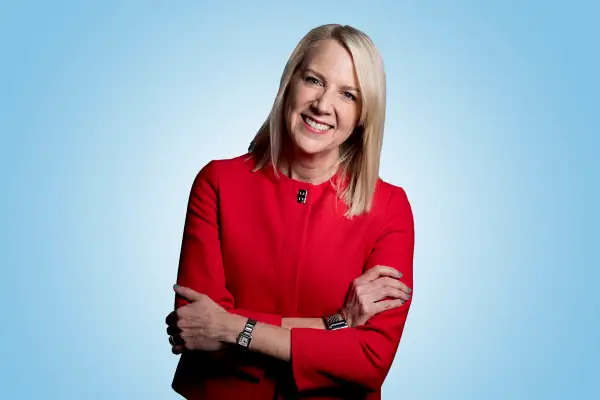How to Simplify Your Investments and Boost Returns, According to Morningstar's Director of Personal Finance
Money is not a client of any investment adviser featured on this page. The information provided on this page is for educational purposes only and is not intended as investment advice. Money does not offer advisory services.

Investing can often seem complicated, but it doesn’t have to be.
In fact, when it comes to managing your portfolio, a streamlined approach with few funds and fewer accounts can help you make the most out of your money – and could even boost your returns, according Morningstar Director of Personal Finance Christine Benz.
Benz, who last month published a report on fighting what she calls "portfolio sprawl," says de-cluttering your investments can be one of the easiest ways to improve your finances. That's especially true for older workers and those nearing retirement, since they've had the most time to collect extra baggage.
Sprawl is a problem because it makes it hard to keep tabs on what's in your portfolio, not to mention your asset allocation across different accounts, she says. "It just requires more oversight than is ideal."
We interviewed Christine Benz to talk about it. Here are three steps to success:
Consolidate similar accounts
For most investors, your 401(k) is tied to your employer. That means, by the time you've switched jobs several times, you're likely to end up with several of these accounts. That can make it harder to keep track of your savings and push up costs unless you consolidate them into an IRA or your current employer's 401(k).
Unless you love your current employer's 401(k), an IRA may be your best bet. Not only is an IRA not tied to your job, they typically offer a far larger range of investment choices, including ETFs, mutual funds and stocks, says Benz.
In addition to simplicity, consolidating several different accounts into a single, large one can also lower costs by allowing you to qualify for funds with lower expense ratios.
Say you have $25,000 in an actively managed foreign stock fund in your old 401(k) and also $25,000 in Vanguard International Growth in an IRA. If you were to roll over the old 401(k) into the IRA, you'd have enough to upgrade from the Investor share class to the Admiral share class – which has a threshold of $50,000. Doing so would allow you to cut your expense ratio from 0.45% to 0.32% per year.
It's important to remember that you can only take account consolidation so far, Benz says. If you're currently employed and contributing to a 401(k), you're not going to be able to roll those savings into an IRA until you leave your job, for instance. What's more there is no way for life partners or married couples to combine their accounts. You have to keep them separate.
Use total market funds
Benz's next tip: Construct your portfolio around total market index funds.
These funds, now sold by most large fund firms including Fidelity, iShares, Vanguard, and Schwab, offer both convenience and price. "It's impossible to beat the expense ratios on broad market index funds," says Benz.
The core three areas you want to focus on: Total U.S. stock market, total international market, and total U.S. bond market indexes. Another idea for your portfolio is to use target-date funds, which hold a mix of stocks and bonds that grows more conservative as you age and can be a "super efficient" way to save for retirement, according to Benz.
By contrast Benz thinks most investors can do without regional-, style- or sector-specific specialty funds. While it can be tempting to use these funds to bet on an attractive sector, like U.S. technology companies, owning these options alongside a total-market fund means doubling down on companies like Apple and Amazon, which already represent the largest individual holdings in the broad-based funds.
Another drawback of specialized funds: They tend to be more expensive. For instance, iShares popular U.S. Technology ETF (IYW) and U.S. Financial ETF (IYF) both levy annual fees of 0.43%. By contrast, iShares Core S&P 500 ETF (IVV) cost just 0.04% -- less than one-tenth the price.
Of course, if you plan to consolidate your holdings, don't overlook taxes. In taxable accounts, selling fund shares that have appreciated in value likely means recognizing a taxable gain, even if you immediately re-invest the money. In tax-advantaged accounts like 401(k)s and IRAs, capital gains are not an issue, and you should feel free to adjust your holdings as needed, says Benz.
Don't over look cash
Cash is another area of your portfolio that you might not think about much, but where, with a little extra effort, you can easily boost your returns. Default options like brokerage sweep accounts can have notoriously low yields, says Benz.
Instead, check out what's available from online savings accounts. Recently rising interest rates and fierce competition to attract new customers have triggered a pricing war among the big online banks, says Benz. That means there's great deals for those willing to seek them out. Among the best available rates, according to Money's annual Best Banks survey: Accounts at Marcus by Goldman Sachs and Synchrony, which both offer a savings rate of 2.25%. By many contrast brick-and-mortar banks offer savings rates as low as 0.1%, according to our Best Banks database.
Another good option is putting money into CDs, especially if you're looking for a low-risk cash account for retirement. Banks like Ally and Barclays offer some of the highest rates around, with rates at just below 3% for a 12-month maturity.
"You just want to make sure you're not letting the money lie fallow," says Benz. "It pays to be discerning."